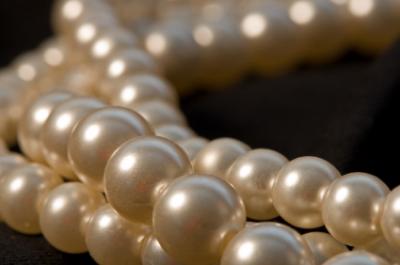FWP:
SETS == HERE/THERE
GAZE: {10,12}
The present verse is part of something like a verse-set; for discussion, see {15,2}.
The pleasure comes from the parallel and yet utterly contrasting situations of beloved and lover: 'there', the (implicit) 'thread' of her self-adorning gaze turns toward stringing pearls; 'here', the lover's gaze is 'threaded' with so many pearl-like tears that it becomes lost to sight in the 'rush'.
The verse can also be read as an example of that same 'mutual causality'
on view in {15,2}. The beloved's indifference to the lover, her preoccupation with the
details of self-adornment (possibly to show herself to Others), causes
the lover to weep floods of tears; his lavishly flowing pearl-like tears cause her to become more
devoted to self-adornment and more interested in stringing pearls. As we
know from {10,2}, her eyelashes can pierce
blood-drops to make a set of coral prayer-beads; no doubt the process
of piercing and stringing tear-pearls would be similar, and equally
effortless.
Nazm's point is a good one: that the verse is built on the metaphorical equation of tears with pearls, but the equation is never made explicit. Here too we are obliged (or permitted) to do a good part of the interpretive work ourselves.

Nazm:
That is, on the thread of the glance so many tears had been threaded that that it itself became hidden and obscured, the way pearls hide the string. Look, the whole simile is found [in earlier poetry], but the freshness is in this, that he does not wish to give the simile. The poet mentions the similar elements, and then does not give the simile. (15)
== Nazm page 15